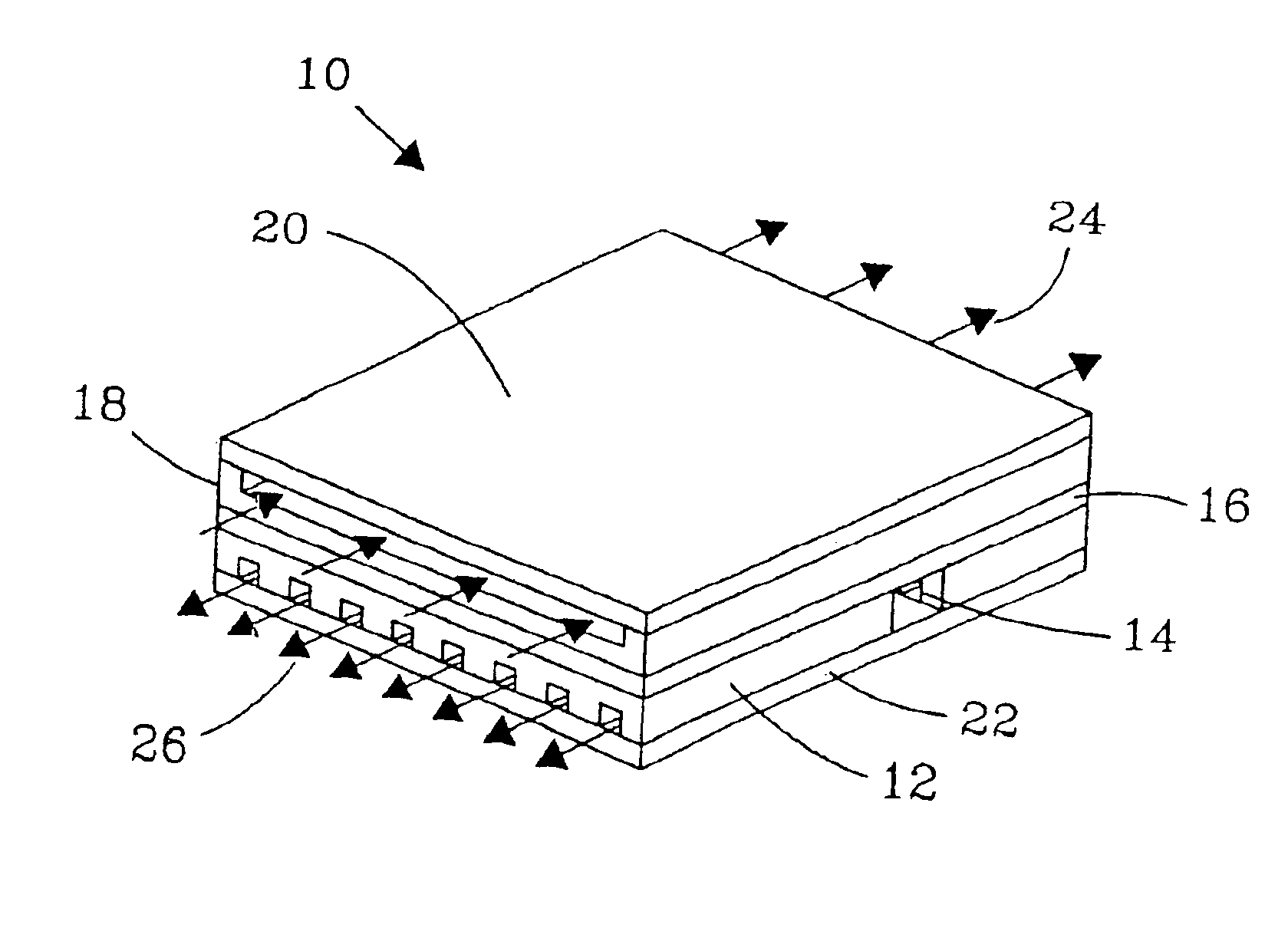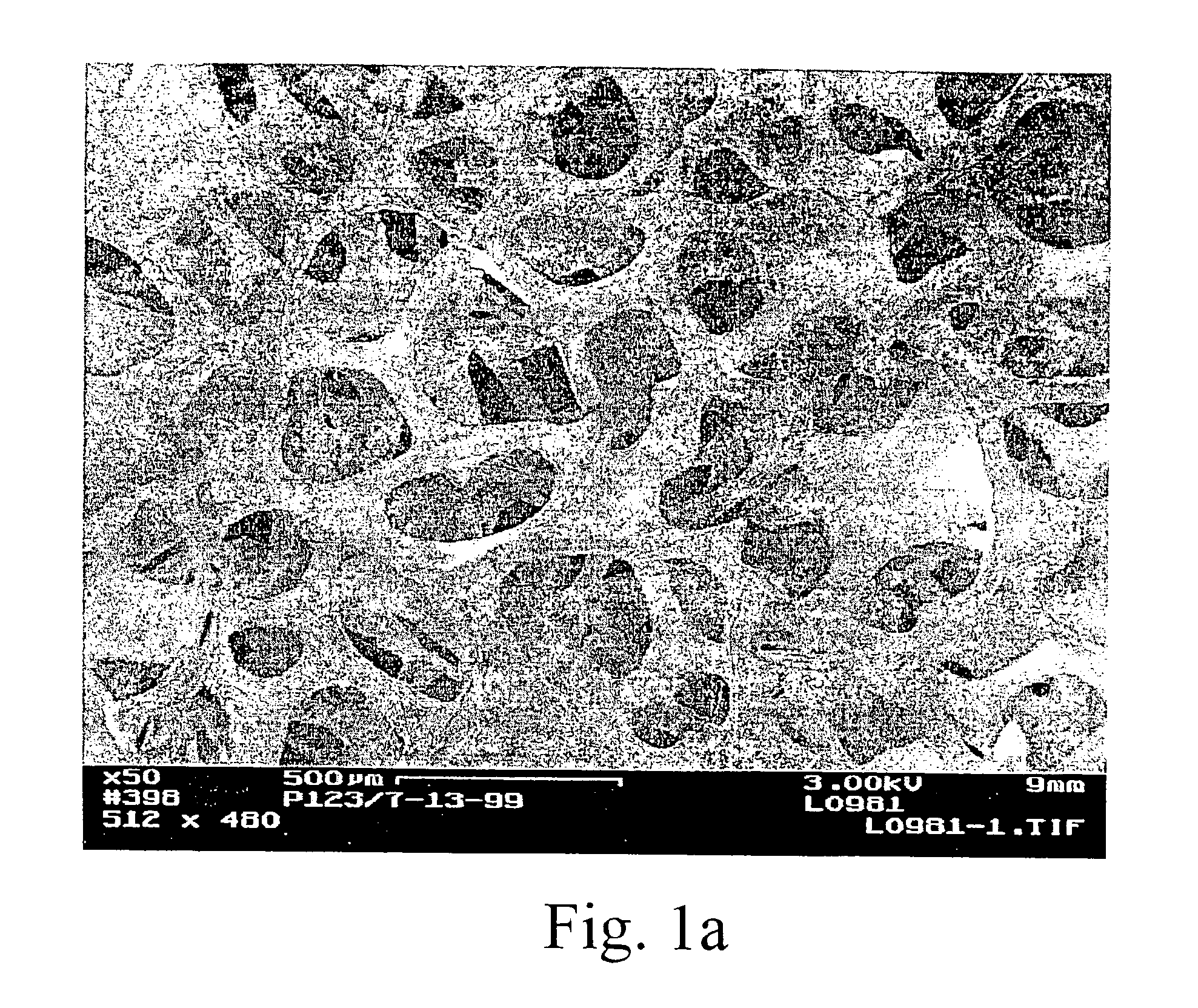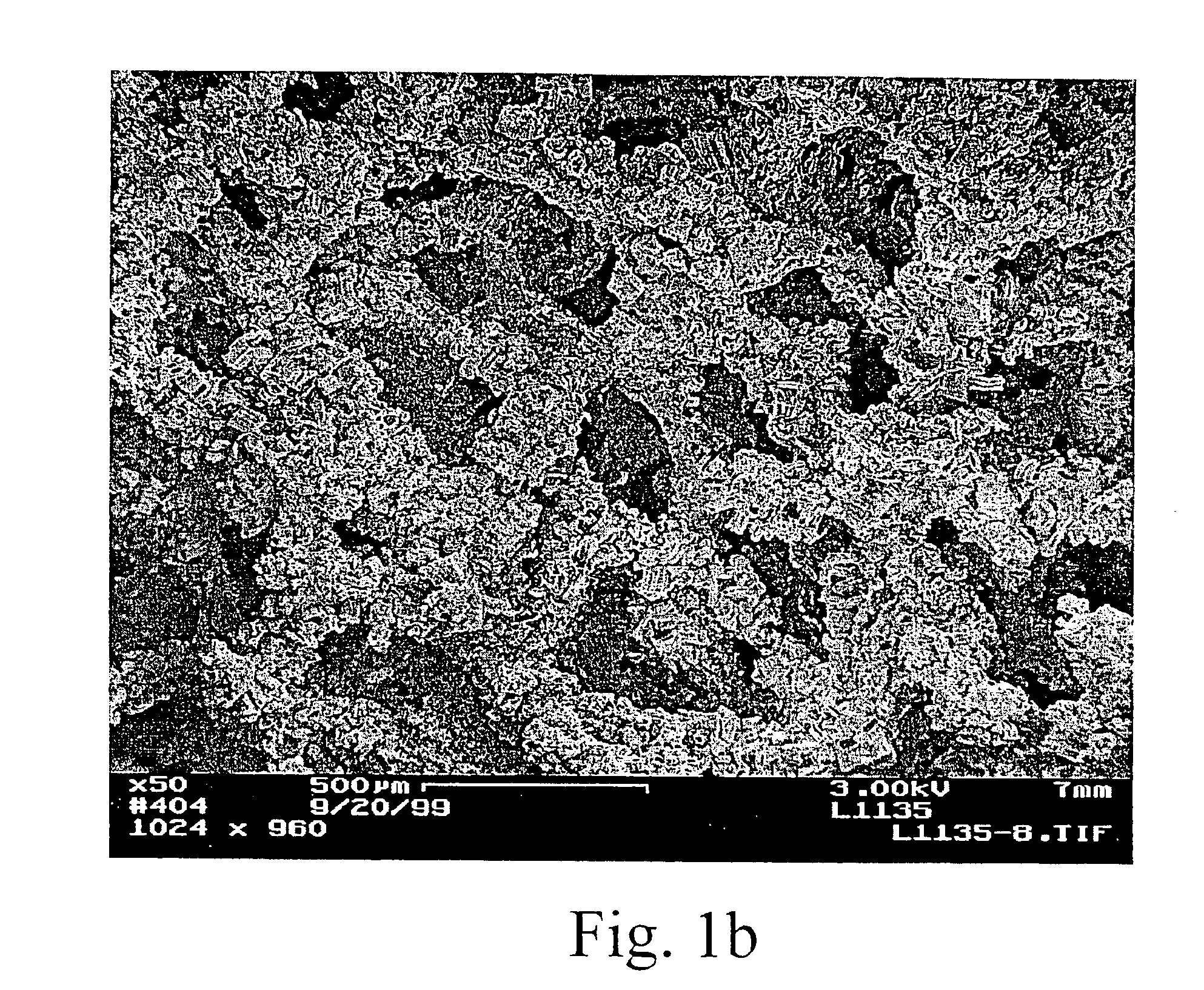Carbon nanotube-containing structures, methods of making, and processes using same
a carbon nanotube and structure technology, applied in the direction of catalyst activation/preparation, solid-state diffusion coating, metal/metal-oxide/metal-hydroxide catalyst, etc., can solve the problems of cracking into powders or particles, unable to predict the synthesis of these materials in novel combinations with varying substrates, etc., and achieves enhanced reaction rate, high surface van der waal force and hydrophobic properties. , the effect of improving the performan
- Summary
- Abstract
- Description
- Claims
- Application Information
AI Technical Summary
Benefits of technology
Problems solved by technology
Method used
Image
Examples
examples
[0064]Layered, aligned carbon nanotubes on metal and ceramic foams were prepared and characterized. The figures show various SEM views of various coated and uncoated foams. FIG. 1a is an SEM view of a FeCrAlY alloy foam. FIG. 1b shows the same type of foam after depositing carbon nanotubes. From the photomicrograph, one can see chunks of aligned nanotubes coating the foam while leaving large pores through the structure. Higher magnification views are shown in FIGS. 1c and 1d. In FIG. 1d the carbon nanotubes appear curved and wavy (kinked). Thus, the nanotubes have a local alignment (see, e.g., FIGS. 1b, 1c) but a jumbled, high surface area orientation at a very high magnification. Thus showing a preferred arrangement in which nanotube alignment is observed at 2000× magnification while substantial kinkiness is observed at 20,000×. The interior of a nanotube-coated metal foam support was viewed by SEM of a cross-sectional cut (not shown) demonstrated that the technique was effective t...
PUM
| Property | Measurement | Unit |
|---|---|---|
| size | aaaaa | aaaaa |
| diameter | aaaaa | aaaaa |
| diameter | aaaaa | aaaaa |
Abstract
Description
Claims
Application Information
 Login to View More
Login to View More - R&D
- Intellectual Property
- Life Sciences
- Materials
- Tech Scout
- Unparalleled Data Quality
- Higher Quality Content
- 60% Fewer Hallucinations
Browse by: Latest US Patents, China's latest patents, Technical Efficacy Thesaurus, Application Domain, Technology Topic, Popular Technical Reports.
© 2025 PatSnap. All rights reserved.Legal|Privacy policy|Modern Slavery Act Transparency Statement|Sitemap|About US| Contact US: help@patsnap.com



